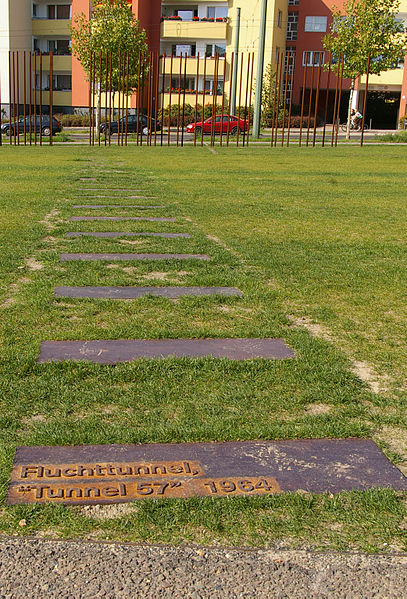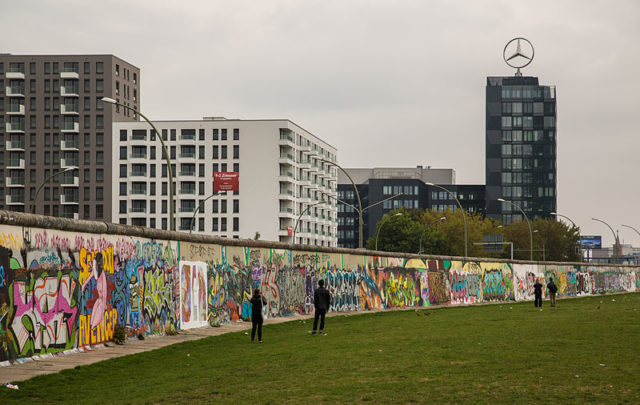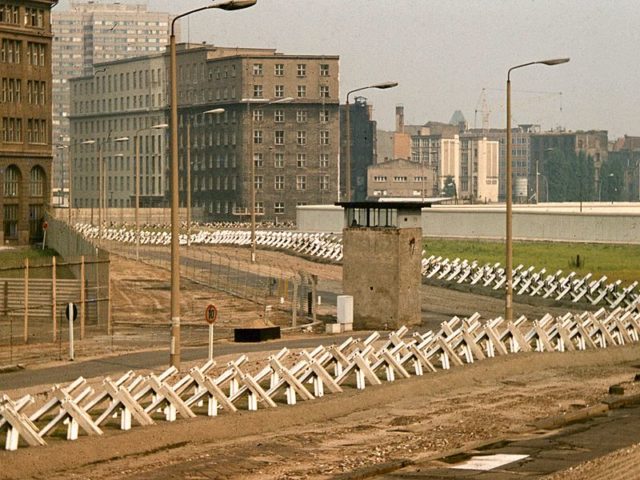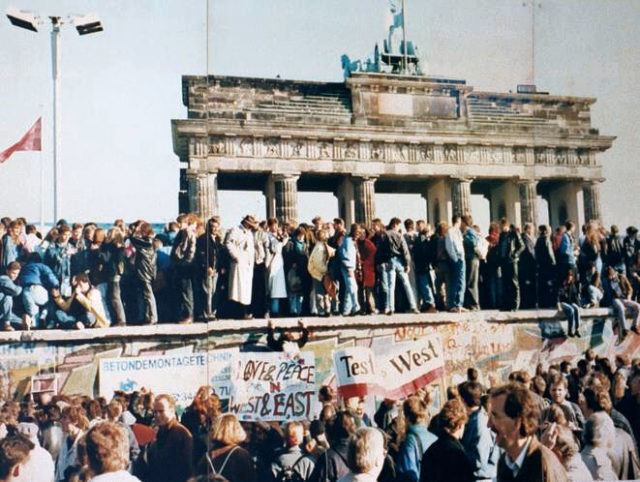When the Second World War was finally over, Germany was divided up into four occupation zones among the Allied forces. Berlin was also divided up into four sectors between the USA, the UK, France, and the Soviet Union. Tensions between the Soviets and America, the UK, and France grew strong over the following two years which culminated in the latter three uniting the non-Soviet controlled zones of the city into one to promote reconstruction in post-war Berlin, during this time in the 1950’s there was mass emigration from the Eastern Bloc across to the occupied Allied zones, and 3.5million East Germans managed to defect from the German Democratic Republic (GDR) before the wall was built.
The Berlin Wall was erected in 1961 with the purpose of preventing any emigration and defection from East Germany to West Germany and in it’s lifetime saw approximately 5,000 people attempt escapes over, or under it. The death toll ranges from 136 to more than 200 people in and around Berlin. Some of these escape attempts were incredibly creative.
During the nights of October 3rd and 4th, 1964, the largest mass escape of East Berlin was conducted with 57 people managing to escape through a tunnel underneath an apartment block in Strelitzer Straße. The tunnel itself was two feet high and three feet wide, and the people making the leap could not bring any baggage or belongings with them, only their papers. They came out on Bernauer Straße, underneath a disused bakery in West Berlin.

There is a memorial plaque on the site to commemorate the escape and the death of Schultz.
A trapeze artist living in East Berlin had been banned from performing due to his beliefs being anti-communist, so went over the wall on a tightrope to escape to West Berlin. Horst Klein said he ‘couldn’t live any longer without the smell of the circus’ to newspapers in the city at the time and in December 1962 he made his brave escape over the wall.
Klein climbed an electricity pole near the Wall and went across the cable, over the infamous Death Strip in between the two walls dividing Berlin using his hands. When his arms became too tired he then inched his way across the disused power cable and then fell from the cable into West Berlin. He broke both of his arms as a result, but was free to perform again.

Two brothers, Ingo and Holger, in West Germany were determined to rescue their third brother, Egbert, who was stuck in East Berlin. Ingo had escaped East Berlin in 1974 and Holger in 1983, Ingo fled through fences and minefields before floating across the Elbe river on an air matters and Holger used a zip line he created to get to West Berlin.
Their rescue mission went so far as learning how to fly planes, and then painted two ultralight planes in a Soviet style with red stars.
The daring attempt took place in May 1989, when they disguised themselves in military uniforms and flew the planes into East Berlin where they picked up their brother and brought him back. The three brothers were reunited for the first time in a decade.

Two families made a fearless attempt to escape via hot air balloon. Hans Peter Stelczyk, an aircraft mechanic, got the idea from an East German TV show on the history of ballooning and made a hot air balloon with his friend Gunter Wetzel, a bricklayer. Together they built the engine from cooking propane cylinders and an iron platform with posts for corners and handholds, and rope anchors while their wives sewed together canvas and bedsheets to make a 72-foot diameter patchwork hot air balloon of sorts.
While their first attempt failed this did not deter the families, and on September 16th, 1979, they flew across the wall, over minefields and guard towers and crash-landed in West Germany, in a blackberry bush. The total flight time was thirty minutes and families in the town they landed in were quick to offer food and clothing to the escapees.
At 19, Richter swam for four hours across the Teltow Canal in 1966 to reach West Berlin. He said of his ordeal that he was attacked by a swan, there were times where he had to dive underwater to evade the guards and by the time he arrived he ‘had hypothermia and was exhausted’, and then passed out on the shore.
Once he was in West Germany he moved to Hamburg, and in 1971 was released from his East German citizenship. This allowed him to travel to East Germany as a West German resident without any legal consequences, and he saw an opportunity to help those who were still in need.

West Germany bought his freedom four years later and he was released on October 2nd, 1980.
Other escape attempts happened through Hungary and Yugoslavia, or across the Baltic Sea. By the time the Berlin Wall fell, to much celebration, in November 1989 almost 200 people had died around the wall, or along the death strip in Berlin.

How many people alive today remember the Berlin Wall? With it apparent how many American "educators" have a left-leaning or even full-blown socialist outlook, have to wonder how the wall is presented in history texts or classrooms.
ReplyDeleteHey Doug;
DeleteThat is the bad thing, the people that remember the events are fading away and the people that are coming in have a very skewed or diluted version of history and the lessons learned.